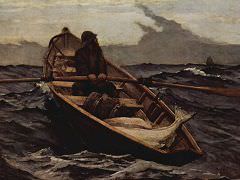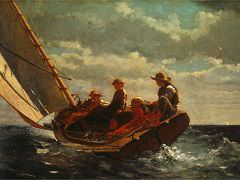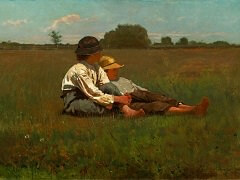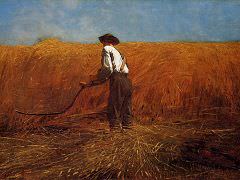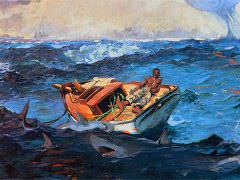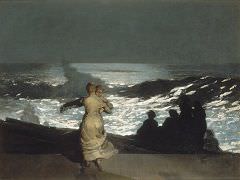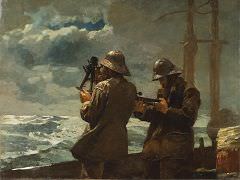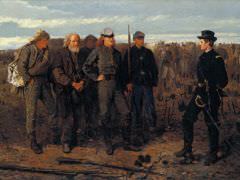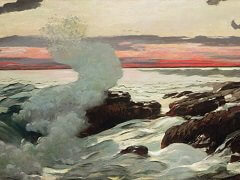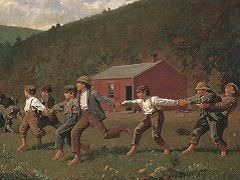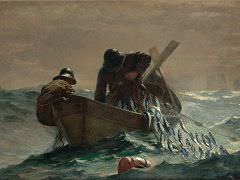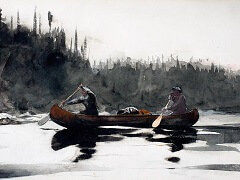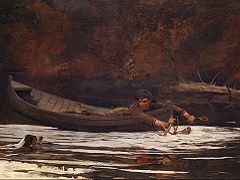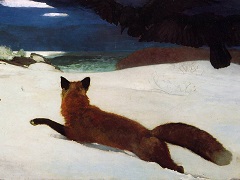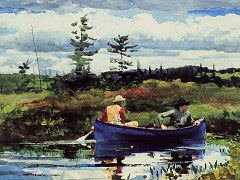The Carnival, 1877 by Winslow Homer
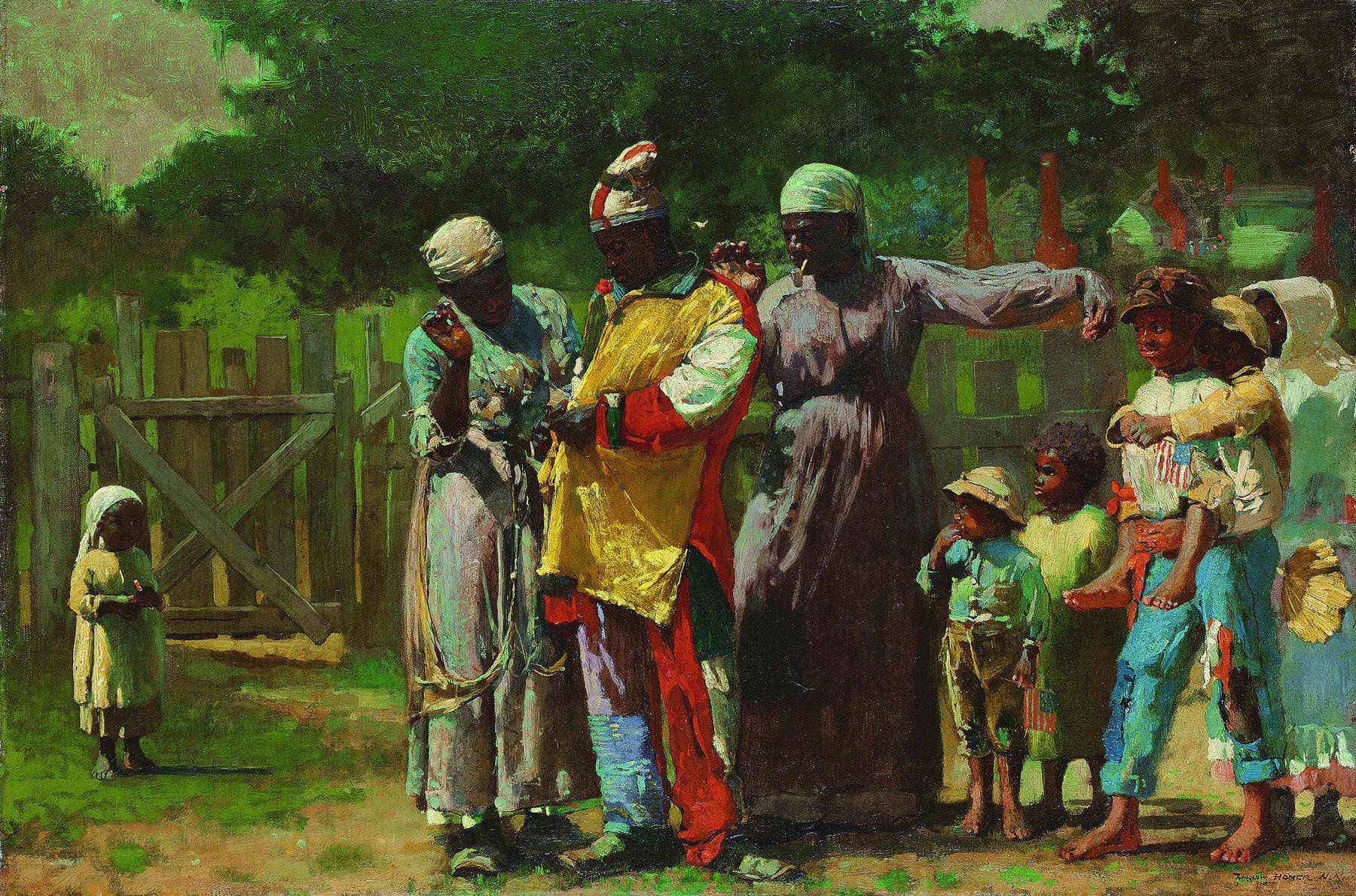
Having visited Virginia as an artist-correspondent during the Civil War, Homer returned there at least once during the mid-1870s, apparently to observe what had happened to the lives of former slaves during the first decade of Emancipation. The brilliant light and color of this scene, originally titled "Sketch - 4th of July in Virginia," contradict its more solemn meaning. The central figure is being dressed as Harlequin, the clown and social outcast of European comic theater. The strips of cloth being sewn to his costume, however, derive from African ceremonial dress and from the festival of Jonkonnu, when slaves left their quarters to dance at their master's house. In the years following the Civil War, aspects of Jonkonnu became part of the celebration of the Fourth of July and Emancipation. Here, the pageantry of multihued costumes suggests a festive celebration, but it also reflects the dislocation of traditional African culture and the beginnings of its transformation into a new tradition.

